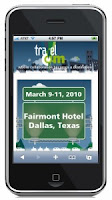I am very interested in watching SAP's emerging mobility strategy as it matures, evolves and morphs yet again. I am not critical; this is how all of mobility is these days. Four years ago we were all using the term Palm, Pocket PC and PDA. Now we are speaking of iPhone, Android, RIM and iPads. Within these different technologies are literally hundreds of different mobile applications and mobile extensions that can add value to SAP's ecosystem. I have been seeing a lot of activity in this space. I have seen SAP partnership announcements with RIM (Blackberry folks), Sybase, Sky Technologies, Syclo and ClickSoftware. I have seen SAP comments from many different industry and solution groups within SAP related to mobility.
What I believe is particularly challenging to SAP is trying to determine if mobility is an extension of an industry business process, or an integrated technology platform. Let me provide three examples of the challenge – work order management is both a back office solution and a mobile client (work orders are dispatched to mobile handheld computers in the field that are carried by the service technicians). Likewise, asset management involves both back office solutions and a mobile client (inspectors, facilities managers, plant maintenance teams and service technicians use mobile clients). Route/Sales management also involves back office solutions and mobile clients (route sales people track sales, inventory, delivery and promotions on mobile devices). So are the mobile applications/clients part of the work order management, asset management or route management categories or do they justify an integrated SAP mobility platform? What do you think?
I image this is a very complex and difficult discussion within SAP. SAP has selected specific partnerships within different industry verticals. These partners are often producing their own mobile applications to extend the capabilities of their solutions; however, these mobile solutions may in fact not align with SAP's overall mobile platform strategy.
From a purely technology perspective, it may make more sense for SAP to develop or select a MEAP (mobile enterprise application platform) that best integrates and supports SAP's underlying architecture and product roadmap, however, their vertical industry partners would not like this strategy at all as they see mobility as a major growth area for them. Very interesting times indeed!
Read SAP's Mobility Challenge, Part 2 here.
Related articles:
